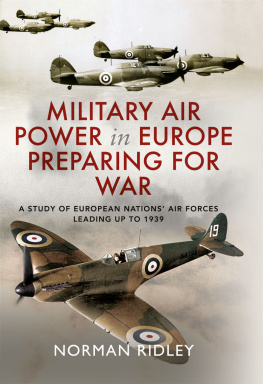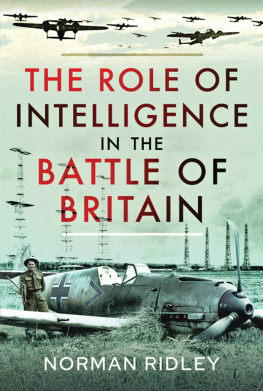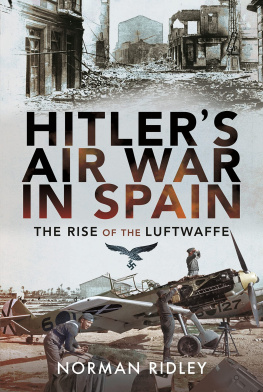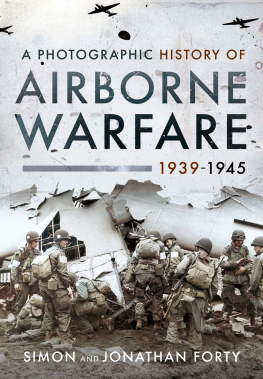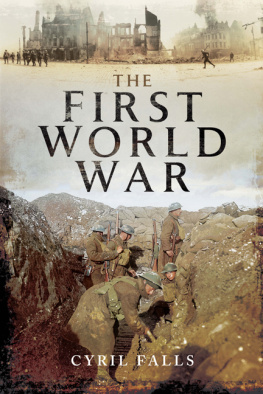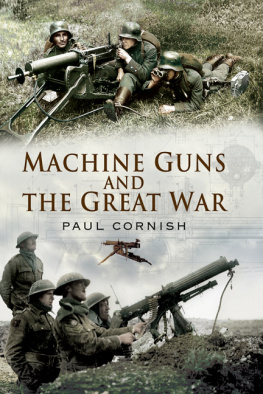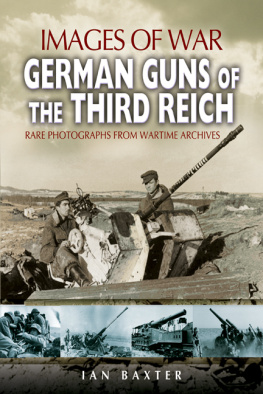MILITARY
AIR POWER
IN EUROPE
PREPARING
FOR WAR
A STUDY OF EUROPEAN NATIONS AIR FORCES
LEADING UP TO 1939
MILITARY
AIR POWER
IN EUROPE
PREPARING
FOR WAR
A STUDY OF EUROPEAN NATIONS AIR FORCES
LEADING UP TO 1939
NORMAN RIDLEY
MILITARY AIR POWER IN EUROPE PREPARING FOR WAR
A Study of European Nations Air Forces Leading up to 1939
First published in Great Britain in 2022 by
Air World
An imprint of
Pen & Sword Books Ltd
Yorkshire Philadelphia
Copyright Norman Ridley, 2022
ISBN 978 1 39906 685 3
EPUB ISBN 978 1 39906 687 7
MOBI ISBN 978 1 39906 687 7
The right of Norman Ridley to be identified as Author of this work has been asserted by him in accordance with the Copyright, Designs and Patents Act 1988.
A CIP catalogue record for this book is available from the British Library.
All rights reserved. No part of this book may be reproduced or transmitted in any form or by any means, electronic or mechanical including photocopying, recording or by any information storage and retrieval system, without permission from the Publisher in writing.
Pen & Sword Books Limited incorporates the imprints of Atlas, Archaeology, Aviation, Discovery, Family History, Fiction, History, Maritime, Military, Military Classics, Politics, Select, Transport, True Crime, Air World, Frontline Publishing, Leo Cooper, Remember When, Seaforth Publishing, The Praetorian Press, Wharncliffe Local History, Wharncliffe Transport, Wharncliffe True Crime and White Owl.
For a complete list of Pen & Sword titles please contact
PEN & SWORD BOOKS LIMITED
47 Church Street, Barnsley, South Yorkshire, S70 2AS, England
E-mail: enquiries@pen-and-sword.co.uk
Website: www.pen-and-sword.co.uk
Or
PEN AND SWORD BOOKS
1950 Lawrence Rd, Havertown, PA 19083, USA
E-mail: Uspen-and-sword@casematepublishers.com
Website: www.penandswordbooks.com
Contents
Abstract
During the years following the Wright Brothers first heavier-than-air flight at Kitty Hawk in 1903, air power began to force its way towards the centre of military doctrine, driven by revolutionary scientific and technological advances, and fired the imagination of military theorists with its almost limitless potential. At the core of air power is air doctrine. This is not something that emerges ready-formed at the moment an air force is created, but has to be defined according to what are perceived to be the broad tenets of a service. The concepts by which air forces organise and train, target their enemies and conduct large-scale operations are encapsulated in written regulations and documents and it is this collection that comprises the doctrine of an air force. Air forces the world over grew out of established army and navy organisations which had their own special doctrines built up over many years out of their values beliefs, practices and aspirations. There are three basic military doctrines: fundamental doctrine, organisational doctrine and tactical doctrine. This book examines the way in which these competed with each other for prominence within the military structures of six major European nations, with different resources, ambitions and philosophies, in the years from the beginning of aviation right up to the start of the Second World War.
The First World War had seen the mechanisation of warfare. Battle fronts had become immobilised in the grip of machine guns and heavy artillery leading to slaughter on an unprecedented scale. The end of the war saw exhausted governments extricating themselves from the carnage, but given the level of upheavals seen since 1914 with the disintegration of the Hapsburg Empire, the rise of communism in Russia, the emasculation of Germany through the Treaty of Versailles and the many smaller conflicts that continued to rage across Eastern Europe and the wider world, few leaders doubted that, sooner or later, another major war would follow. As Frances Marshal Foch put it, the Treaty of Versailles was only a twenty-year truce. The overriding concern was to find ways in future of avoiding the kind of static battle fronts that had consumed so many in such futile efforts.
Military aviation was seen as the one great innovation that had the potential to do this by revolutionising warfare. It would not only augment the effectiveness of ground forces in a tactical role, but also had the means of reaching out strategically beyond the battlefronts to strike at the enemys trade, supplies, communications and industrial production. All through the First World War, military aviation had been firmly under the control of army commanders but there was soon a fierce debate over the way it should be developed. The evolution of an air doctrine within each of the major European powers was fraught with difficulty as the nascent air-arms struggled, with varying degrees of success, to free themselves from army control and find a new, independent identity.
While traditional military leaders refused to concede legitimacy to the idea of an air force having equal status to either the army or navy, theorists were quick to recognise the way in which the boundaries of warfare would be hugely expanded into the third dimension by this revolutionary concept. Long before there was the slightest capability of realising it in practice, the terror bombing theory of such as Guilio Douhet with its apocalyptic scenarios, envisaging whole cities razed to rubble, invaded the collective imagination and had politicians almost rigid with fear. Here was introduced, for the first time, the idea that war would henceforth be waged by whole countries, including civilians, and not just trained and armed military forces. Nothing and nobody would be outside the combat zone with civilian casualties rivalling or exceeding those of the military. It was even hoped by some optimists that the very threat of such a conflagration would act as a deterrent to war itself, but history would prove that the proponents of air power were both willing and able to scale the heights of destruction and ultimately threaten the very existence of humanity.
Chapter 1
Air Doctrine
During World War I, airplanes proved their worth in a variety of realms. Indeed, nearly every modern mission of aircraft received at least a rudimentary trial between 1914 and 1918.
The tenets of air doctrine evolve over time through the analysis of experience and the teachings of prominent theorists. To a greater or lesser extent, air doctrine was only one part of the overall military doctrine of each country considered in this study and each nascent air force was obliged to follow its own trajectory as they struggled to create their own individual identity and purpose. The air forces of Europe up to 1939 adopted different air doctrines according to their military, geographical and political situations. For instance, an island state such as Britain had looked out at its near neighbours and potential enemies across the sea comforted by its possession of the worlds largest navy, while Germany lived uneasily with danger lurking just across several of its land borders. France had emerged from the First World War proud in victory with the worlds biggest army, but with an unstable political structure rent by deep internal divisions. Two other nations had undergone fundamental change at a time when they were also dealing with the fallout from Versailles. Poland was to find itself reborn as a country, albeit insecure and impoverished, with its overriding ambition to simply survive and avoid being devoured once again by mortal enemy nations to the east and the west. Russia was consumed by revolution and war as it struggled to establish secure borders and, internally, convert an agricultural feudal state into a modern industrial giant. Further south and pursuing its destiny within a Mediterranean context, Italy had decided to reinvent itself as the head of a new Roman Empire, but inevitably found that it could not do so while ignoring events taking place on the other side of the Alps.

